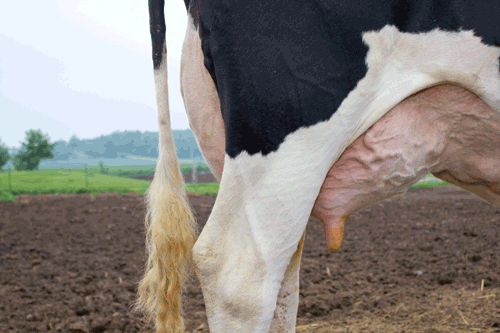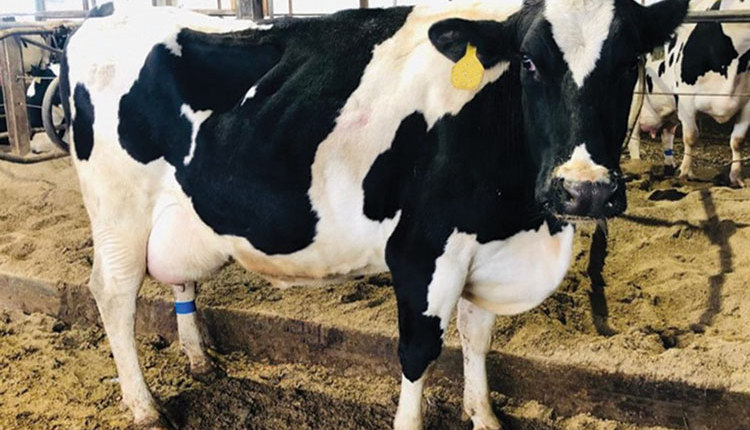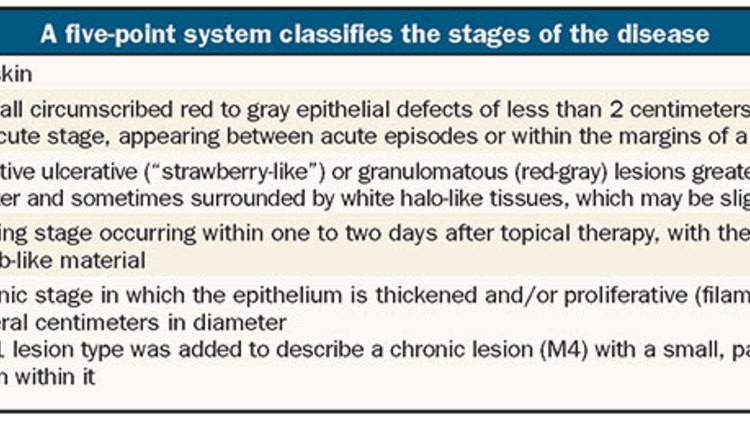The author is an extension agent on the Wisconsin Dairy Team based in Kewaunee County, Wis.

In order to get a better idea on how A.I. is used on farms, we developed a survey asking producers a variety of questions about it.
The questionnaire was distributed by University of Wisconsin Extension agriculture agents to the state's dairy producers at meetings, direct mail, and through the internet via an online electronic survey service called Zoomerang from January through April 2009. Our survey took place prior to wide-scale use of genomically tested young bulls. In all, 256 responses were collected: 213 paper questionnaires and 43 online.
A look at the participants
Facilities: Producers could select one or more facility types since cows and heifers are sometimes housed differently on the same farm. (This led to percentages over 100 percent.) The two largest categories were tie stalls (43 percent) and free stalls (41 percent). After that, 11 percent reported a combination of two or more housing options, 8 percent were graziers, and 2 percent housed cows in a bedded pack/compost barn.
Herd size:
53 percent had herds under 100 cows
31 percent had herds of 101 to 250 cows
9 percent had 251 to 500 cows
4 percent had 501 to 1,000 cows
3 percent had herds over 1,000 cows
According to data from the National Agriculture Statistics Service, these results very similarly mirror the actual distribution of herds in Wisconsin.
Herd bulls:
65 percent do not use natural service sires
25 percent used natural service sires for cleanup breeding
12 percent said natural service sires gave them good pregnancy rates
9 percent said no time to heat detect
9 percent said their bulls had a good pedigree
4 percent said A.I. was too expensive
Note, survey responses were over 100 percent because natural service users could check more than one item. On another related question, only 64 percent of respondents reported using A.I. on heifers 100 percent of the time. On cows, that number grew to 78 percent for the 100 percent user group.
In the second section of the survey, we asked producers to rank 27 traits and selection factors that contribute to their decision to choosing A.I. sires. The highest-ranked criteria were:
Udder composite (4.39)
Foot and leg composite (4.34)
Service sire calving ease (heifers) (4.34)
Type (3.95)
Productive life (3.93)
Reliability (3.90)
Traits and selection factors that consistently ranked low were: sexed semen availability (2.39), aAa numbers (2.27), and Red or Red Holstein Carrier (2.25). Even though Red and Red Carrier ranked low overall, herds with a high percentage of registered cattle consistently ranked it high. The remaining 18 traits and factors not listed fell in a range between 2.4 and 3.9 on the one to five scale.
The third section served as a catch-all for other A.I. practices. We focused on young sire use, mating criteria, and crossbreeding.
Producers were asked to rank reasons they used young, unproven sires. Remember, our survey was initiated prior to widestream availability of genomically tested bulls. Survey takers were given the opportunity to choose more than one reason:
51 percent answered price
48 percent responded cleanup
35 percent said newest genetics available
17 percent did not use young, unproven sires
14 percent said pedigree
5 percent said other.
The majority of those who responded other used young sires for credits with the A.I. company.
Next, producers who used young, unproven sires were asked which service
32 percent said third service
19 percent said fourth service or higher
17 percent said first service
16 percent said they did not use them
15 percent said second service
Producers were then asked which criteria they used for mating the herd. When given the option to choose more than one criteria, the following answers were given:
46 percent of respondents answered mating program through my A.I. company
34 percent choose the bull based on the herd goal (milk production, type, longevity, and so forth)
29 percent choose bull's traits based on the cow's
11 percent selected based on the actual cow's pedigree
11 percent had other reasons.
Other reasons are hybrid vigor, aAa numbers, type, fertility, A.I. tech advice, young sires, only use A.I. on heifers, breed association mating service, whatever is on sale, and linear classification.
We also asked producers how many A.I. sires get used on their farms during a year.
45 percent used 11 to 20 bulls
28 percent used 1 to 10 different bulls
15 percent used 21 to 30 bulls
12 percent used 31 or more different bulls
Read the complete article in the December 2010 issue of Hoard's Dairyman, on page 800

In order to get a better idea on how A.I. is used on farms, we developed a survey asking producers a variety of questions about it.
The questionnaire was distributed by University of Wisconsin Extension agriculture agents to the state's dairy producers at meetings, direct mail, and through the internet via an online electronic survey service called Zoomerang from January through April 2009. Our survey took place prior to wide-scale use of genomically tested young bulls. In all, 256 responses were collected: 213 paper questionnaires and 43 online.
A look at the participants
Facilities: Producers could select one or more facility types since cows and heifers are sometimes housed differently on the same farm. (This led to percentages over 100 percent.) The two largest categories were tie stalls (43 percent) and free stalls (41 percent). After that, 11 percent reported a combination of two or more housing options, 8 percent were graziers, and 2 percent housed cows in a bedded pack/compost barn.
Herd size:
53 percent had herds under 100 cows
31 percent had herds of 101 to 250 cows
9 percent had 251 to 500 cows
4 percent had 501 to 1,000 cows
3 percent had herds over 1,000 cows
According to data from the National Agriculture Statistics Service, these results very similarly mirror the actual distribution of herds in Wisconsin.
Herd bulls:
65 percent do not use natural service sires
25 percent used natural service sires for cleanup breeding
12 percent said natural service sires gave them good pregnancy rates
9 percent said no time to heat detect
9 percent said their bulls had a good pedigree
4 percent said A.I. was too expensive
Note, survey responses were over 100 percent because natural service users could check more than one item. On another related question, only 64 percent of respondents reported using A.I. on heifers 100 percent of the time. On cows, that number grew to 78 percent for the 100 percent user group.
In the second section of the survey, we asked producers to rank 27 traits and selection factors that contribute to their decision to choosing A.I. sires. The highest-ranked criteria were:
Udder composite (4.39)
Foot and leg composite (4.34)
Service sire calving ease (heifers) (4.34)
Type (3.95)
Productive life (3.93)
Reliability (3.90)
Traits and selection factors that consistently ranked low were: sexed semen availability (2.39), aAa numbers (2.27), and Red or Red Holstein Carrier (2.25). Even though Red and Red Carrier ranked low overall, herds with a high percentage of registered cattle consistently ranked it high. The remaining 18 traits and factors not listed fell in a range between 2.4 and 3.9 on the one to five scale.
The third section served as a catch-all for other A.I. practices. We focused on young sire use, mating criteria, and crossbreeding.
Producers were asked to rank reasons they used young, unproven sires. Remember, our survey was initiated prior to widestream availability of genomically tested bulls. Survey takers were given the opportunity to choose more than one reason:
51 percent answered price
48 percent responded cleanup
35 percent said newest genetics available
17 percent did not use young, unproven sires
14 percent said pedigree
5 percent said other.
The majority of those who responded other used young sires for credits with the A.I. company.
Next, producers who used young, unproven sires were asked which service
32 percent said third service
19 percent said fourth service or higher
17 percent said first service
16 percent said they did not use them
15 percent said second service
Producers were then asked which criteria they used for mating the herd. When given the option to choose more than one criteria, the following answers were given:
46 percent of respondents answered mating program through my A.I. company
34 percent choose the bull based on the herd goal (milk production, type, longevity, and so forth)
29 percent choose bull's traits based on the cow's
11 percent selected based on the actual cow's pedigree
11 percent had other reasons.
Other reasons are hybrid vigor, aAa numbers, type, fertility, A.I. tech advice, young sires, only use A.I. on heifers, breed association mating service, whatever is on sale, and linear classification.
We also asked producers how many A.I. sires get used on their farms during a year.
45 percent used 11 to 20 bulls
28 percent used 1 to 10 different bulls
15 percent used 21 to 30 bulls
12 percent used 31 or more different bulls
Read the complete article in the December 2010 issue of Hoard's Dairyman, on page 800








